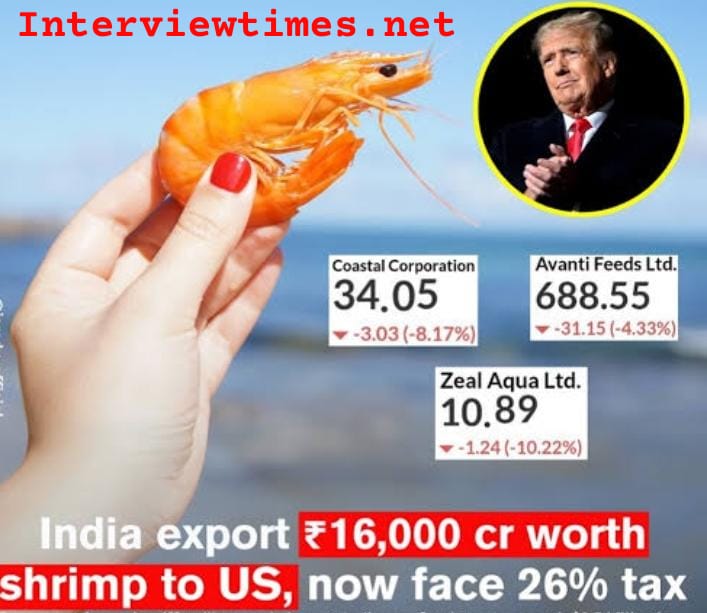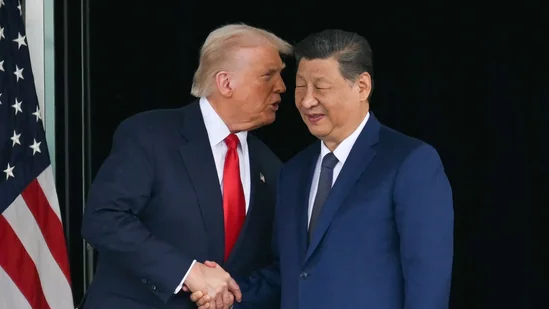India’s seafood export industry, a crucial pillar of its agricultural economy, is facing one of its most significant challenges in recent years. The United States, which accounts for nearly 40 percent of India’s shrimp exports, has announced a steep increase in tariffs that could severely impact the already fragile aquaculture sector. Effective July 2025, shrimp imports from India will be subject to a tariff hike from the current 10 percent to a staggering 26 percent. For India’s shrimp exporters and the lakhs of farmers who depend on them, this decision is nothing short of a crisis.
The Indian shrimp industry is valued at around $7 billion annually, with over 70 percent of the output destined for export markets. Andhra Pradesh leads the way, contributing to nearly 60 percent of total production, followed by states like Gujarat, Odisha, and West Bengal. The industry employs over 300,000 farmers directly, with countless others engaged in related processing, logistics, and trade activities. The sudden imposition of higher tariffs by the U.S. government poses an existential threat to this interconnected economic network.
The decision came in the wake of a recent review conducted by the U.S. Department of Commerce, which claimed that Indian exporters were benefitting from subsidies deemed inconsistent with international trade regulations. While officials in India have denied any unfair trade practices, the new tariffs are set to take effect nonetheless. Major American importers, including Walmart and Kroger, are reportedly reassessing their supply contracts, casting doubt over future order volumes.
For many shrimp farmers, particularly smallholders, this development could not have come at a worse time. The cost of shrimp cultivation has steadily increased due to rising prices of feed, electricity, and labor. Coupled with the effects of climate variability and disease outbreaks in aquaculture ponds, profit margins have already been razor-thin. With reduced demand from their largest buyer, many farmers are contemplating whether to skip the next farming cycle altogether.
Exporters, too, are in a bind. In an attempt to retain U.S. clients, many are slashing their offer prices, which only exacerbates the strain on the production chain. Others are seeking alternative markets such as China, the Middle East, and Southeast Asia. However, these markets cannot match the volume and consistency of demand offered by the U.S., nor can they absorb India’s current production capacity at profitable prices.
The Indian government, aware of the gravity of the situation, has initiated diplomatic channels to appeal the tariff hike. Commerce ministry officials have also held discussions with the Marine Products Export Development Authority (MPEDA) and the Seafood Exporters Association of India (SEAI) to explore mitigation strategies. These include pushing for subsidies for farmers to cover input costs, exploring new trade agreements, and investing in quality improvements to make Indian shrimp more competitive globally.
Experts also point out that India must take this crisis as an opportunity to diversify its aquaculture portfolio. Currently, black tiger and white-leg shrimp dominate the market. Adding species such as sea bass, tilapia, and scampi could reduce overreliance on a single product and open new doors for export. Moreover, investments in processing infrastructure, cold chain logistics, and branding Indian shrimp as a premium, sustainable product could help penetrate high-value markets in Europe and Japan.
Sustainability has also become a focal point in recent discussions. Several importing countries have begun imposing traceability and eco-labeling standards. Indian producers will have to align with these global trends by ensuring environmentally sound farming practices and transparent supply chains. The MPEDA has already launched pilot programs encouraging cluster farming with better water management and disease control, but scaling these initiatives will require greater coordination and funding.
While the long-term future of India’s shrimp industry will depend on its adaptability, the short-term outlook remains uncertain. If the full 26 percent tariff takes effect without exemptions or negotiations, it may result in a sharp contraction of India’s shrimp exports. Thousands of jobs could be lost, and many small farmers could be driven into debt.
The next few months are critical. As Indian authorities continue diplomatic efforts and exporters look to new markets, much hinges on whether Washington offers any leeway. For now, the resilience of one of India’s most successful agro-export sectors is being tested like never before.





